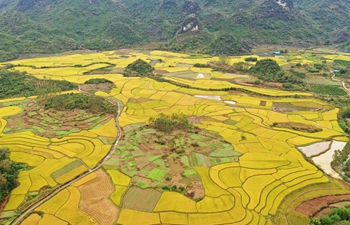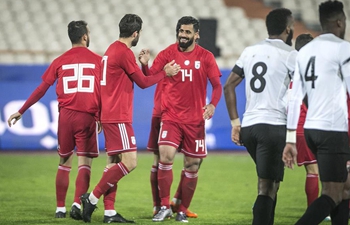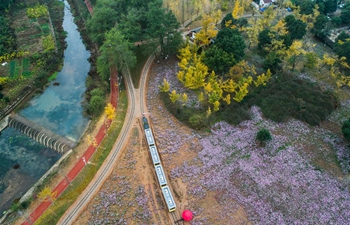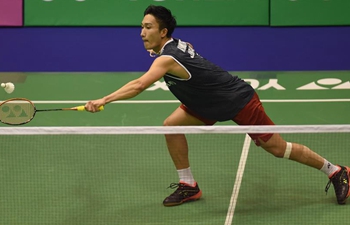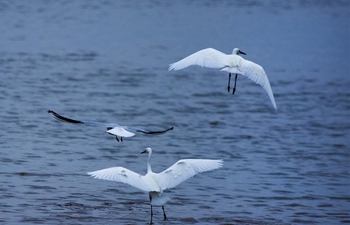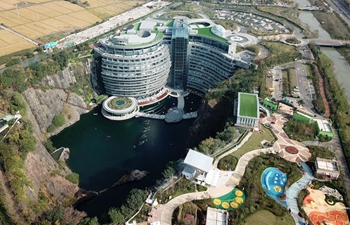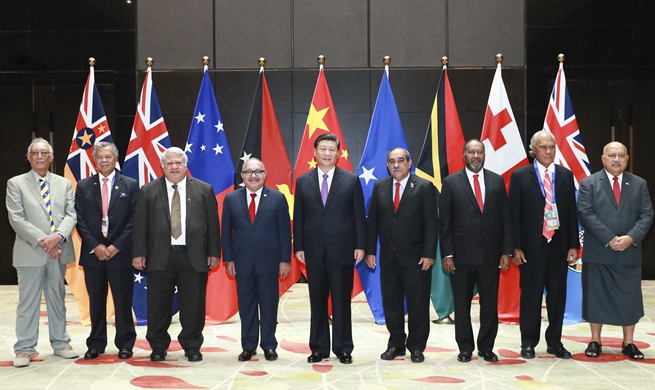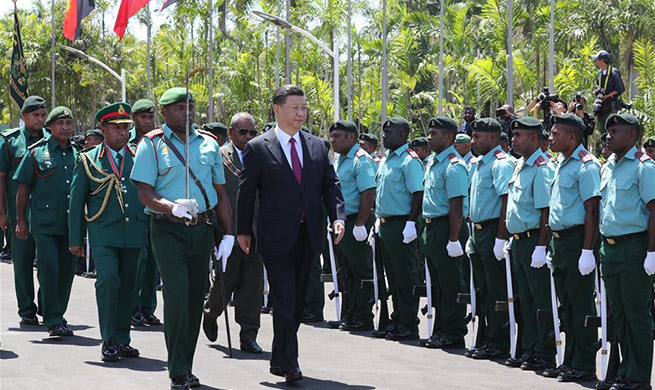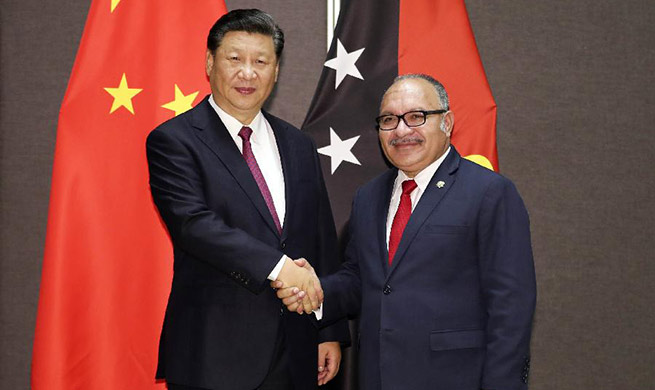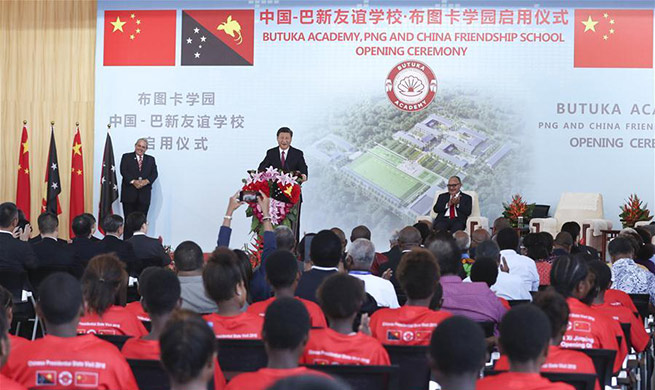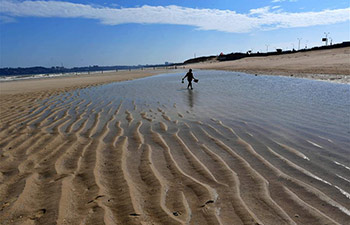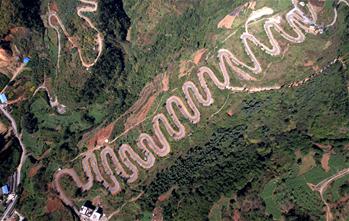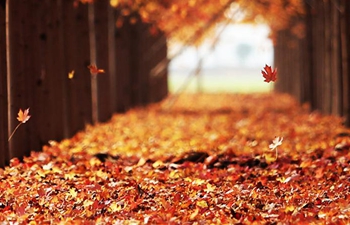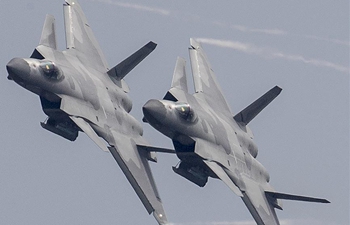NANCHANG, Nov. 17 (Xinhua) -- When Tom Macia was little, he knew of his father's participation in the Doolittle Raid, and how his father was saved by Chinese people when he had to jump out of an aircraft low on fuel when flying over China.
"When I was in high school in the 1960's, my father showed me the locations on a map where he had been in China in April and May of 1942," Macia said. "He was very clear that his life had been saved through the kindness and assistance of Chinese people."
Macia, 71, comes from Arlington, Virginia in the U.S. He recently came to east China's Jiangxi Province to seek information about the people that helped rescue his father, James H. Macia. A Chinese historian helped spread the word on social media, which caused a stir of activity and interest.
Macia's father was part of Crew No.14 that participated in the Doolittle Raid. He was rescued in Jiangxi's city of Shangrao after parachuting out of his aircraft, which had just finished bombarding Japan in 1942.
"Had that kindness and assistance not been given and if my father had not survived, I, of course, would never have been born since I was born in 1947," Macia said. "There was never a doubt that my father felt great affection and appreciation for the Chinese people he met and who helped him."
Macia said his father did not try to locate any of the Chinese who had helped him since, for most of his remaining life, relations between the U.S. and China were not good. However, he saved the business cards of many of the Chinese he had met in April 1942.
"Knowing my father, I think that indicates how important he felt those people had been in helping him to safety," he said.
After his father died in 2009, Macia began to investigate the details of his father's participation in the Doolittle Raid and his time in China. Macia later put together a photo album after his father's death. He located a historian in the U.S, who provided him with documents from the U.S Air Force archives that gave him an idea of where in China his father had been during the war.
"I also contacted a Chinese American family in California who helped identify certain locations," he said.
Historical records show that on April 18, 1942, a team of 16 bombardment aircraft led by James Harold Doolittle struck Japan. On their way back, planning to land in Zhejiang Province, the planes ran out of fuel over various localities in Jiangxi and Zhejiang, and airmen had to parachute to safety. The locals saved 64 airmen, 17 of which were saved in Jiangxi's Shangrao.
Last month, Macia took the pictures and business cards his father left and came to Shangrao, hoping to find any information about the people in the pictures and cards, as well as their offspring.
"I didn't expect to find any of the people my father had met," he said. But with the help of a translator, Macia managed to contact the television station in Shangrao. He later met government officials, as well as reporters from the local television station.
"They took me to villages where members of Crew No. 14 had been in 1942," he said. "I met people who had been children in 1942 and who remembered the American airmen. This was all much more than I expected and, although the locations have all changed significantly, I was very happy to learn that the Chinese people in those areas had kept the memory of my father and his comrades. It was all very heartwarming."
A Chinese historian was particularly helpful.
Luo Shiping, a historian in Shangrao, met Macia during the opening of the Doolittle Raiders Memorial Hall in Zhejiang's Quzhou on Oct. 25.
"After meeting with Tom Macia, I gave him my phone number and email, offering to help him find information about these people," Luo said.
Luo said Macia showed him pictures, in which he identified former Chinese military officials Gu Zhutong and Tang Zichang, and their family members.
"Most of these pictures were seen for the first time, and they are of great historical value," Luo said.
Luo also identified a doctor named Chen Baocong. Dr. Chen, who was fluent in English, was a famous doctor at the time and helped treat the American airmen. Chen got along very well with the patients and gave them his business cards.
"I uploaded the business cards and pictures to WeChat on Oct. 31, and managed to get in contact with Dr. Chen's daughter the next day," Luo said. "She told me things about her father and how her father treated the injured American airmen."
According to Luo, Chen's daughter, 81, currently lives in Shangrao.
"It is such a comfort that Mr. Macia came to China to find out about his father's past," said Chen's daughter. "It truly shows the deep friendship between the Chinese and American people."
"Professor Luo has worked very hard to identify the Chinese people in the picture I provided of Crew No. 14, as well as those identified on the business cards," Macia said. "I was so appreciative of the fact that he sent me the story and pictures of Dr. Chen and was even able to locate and interview Dr. Chen's daughter. I thank her for sharing the story of her father and family."
Other people that Macia was looking for have unfortunately passed away, according to Luo. But Macia said he is still grateful.
"I was happily surprised and am very grateful to all the Chinese people I met for their efforts to remember the events of 1942," he said. "I was able to establish friendships with the Chinese people I met, and I hope to maintain those friendships. I believe that through personal friendships, we will ensure the continued good relations between China and the United States."




